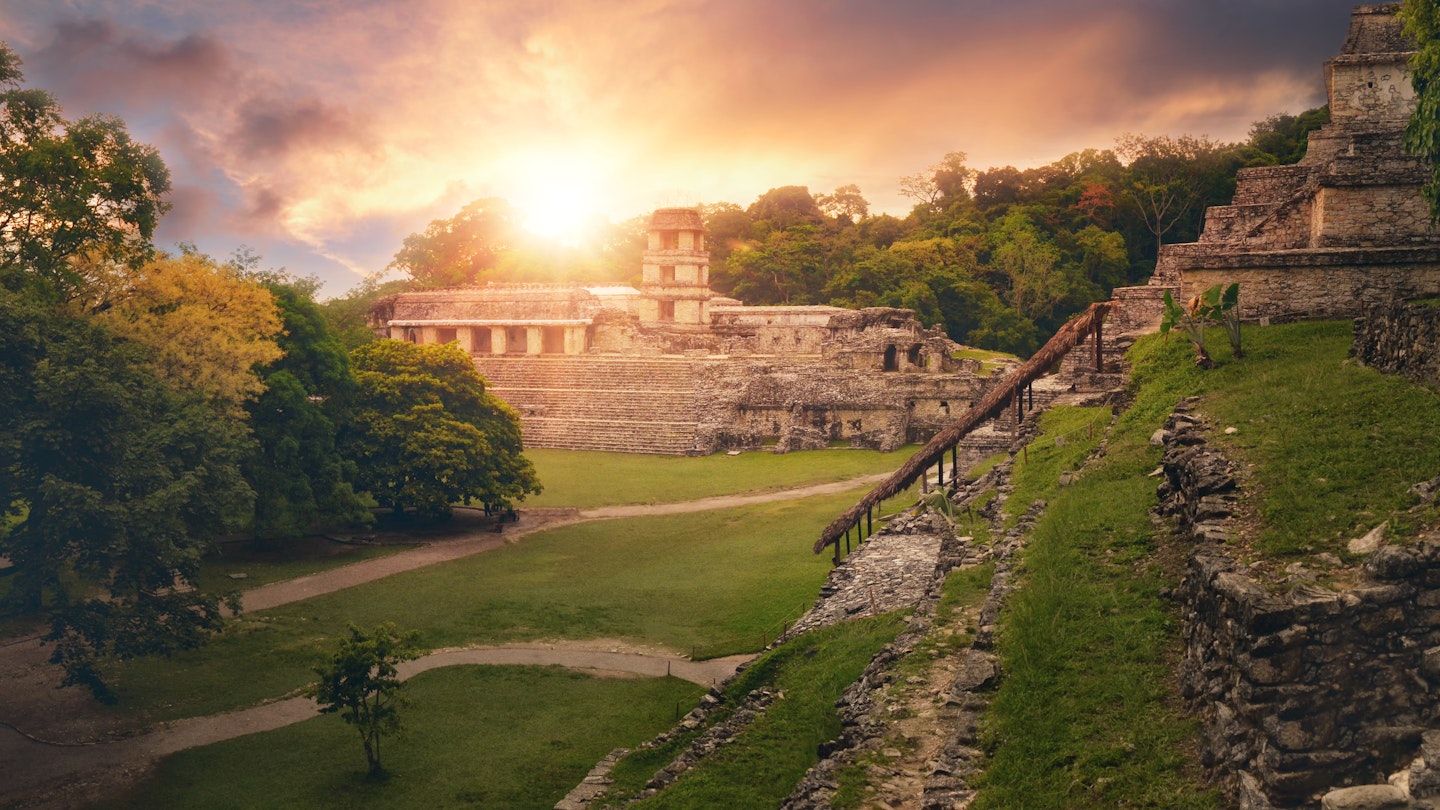War, weather, cosmic intervention, or simply a case of purpose served… nothing lasts forever. Here are some of the world’s most intriguing lost cities, towns, and settlements.
1. Palenque, Mexico
At the foot of the Chiapas mountains in southwestern Mexico, Palenque is an archaeologist’s treasure trove. The city appears to have existed at least since 100 years BCE. Five hundred years later, it became a major population center of Classic Mayan civilization, complete with myth and legend: child kings, invasions, decapitations, court intrigue, and finally the abandonment of the city. Palenque has a jungle climate, so prepare accordingly – take sunscreen, insect repellent, and plenty of water.
2. Babylon, Iraq
Babylon, in modern-day Iraq, was settled around 2500 BCE. It became a great center of the Mesopotamian world 500 years later when Hammurabi, the first king of the Babylonian empire, made it the capital. It was destroyed in the 6th century BCE by the Assyrians, and then left to fall into ruin in the 2nd century BC, following the death of Alexander the Great. The ruins of Babylon conjure images of a biblical past, including the great Tower of Babel and the beautiful hanging gardens. The city is about 53 miles (85km) south of Baghdad.

3. Angkor, Cambodia
Crumbling stone temples in the python grip of jungle vines, and a flash of turmeric-colored robes disappearing into the alcoves of ancient temples define Angkor in Cambodia. Although it has its fair share of tourists, its size means you’ll easily find a place to get lost in the distant past. New research suggests it covered over 1100 sq miles (3000 sq km), with a population close to one million, serving as the capital of the Khmer empire from AD 900 to 1200. It has been suggested that climate change, affecting the water supply, caused the city to be abandoned some 500 years ago. Angkor is conveniently located just 20 minutes north of Siem Reap.
4. Dunwich, England
Dunwich, in what is now Suffolk, was a thriving major seaport and one of the largest cities in medieval Britain, said to have been the capital of East Anglia – but all built on sand. In the late 13th century, a storm devastated much of the town. Coastal erosion compounded the damage, and over centuries, the town slipped into the ocean. Tales of haunted beaches abound, and at low tide, you might well hear the muted tolling of church bells beneath the waves. Dunwich Museum offers a scale replica of the city in its heyday, free from the ravages of coastal erosion.

5. Herculaneum, Italy
Similar to nearby Pompeii, Herculaneum was lost to a river of Vesuvian lava and ash in AD 79. Originally an upper-class town, it was home to members of the imperial family and uncovered around 300 years ago, remaining a treasure trove for archaeologists. The pyroclastic flow that enveloped the city carbonized organic matter, preserving structures and human bodies. Most enticing are the hundreds of scrolls found in the Villa dei Papiri, texts from the only ancient library to have survived into modern times. The city can be accessed via a 25-minute Circumvesuviana train from Naples.
6. Darwin, California, USA
Like numerous towns in late-19th-century USA, Darwin emerged from a silver discovery. However, these towns often experienced rapid declines – Darwin became derelict just four years after its settlement in 1878 as prospectors hurried to the next opportunity. It saw a revival in the early 20th century when copper surged in demand. Today, while you might encounter a resident, it’s more likely you’ll find tumbleweed caught in the desert wind.
The edge of Death Valley seems an appropriate backdrop for the remnants of a Wild West ghost town. Only one lonely road leads to Darwin, branching off State Highway 190, 47 miles (75km) southwest of Stovepipe Wells.

7. Skara Brae, Scotland
This prehistoric set of ruins in Orkney, Scotland, represents more of a village than a city. Discovered in 1850 after a fierce storm revealed the stone remnants, excavations unveiled a settlement featuring at least eight stone cottages, complete with beds, hearths, and shelves. Erosion eventually brought the village closer to the sea, leading to its abandonment until being reclaimed by sand for four millennia. Today, the site remains under threat from erosion, and visits in winter depend on the weather. Orkney is accessible via ferries and flights from the British mainland, some of which are seasonal.
8. Taxila, Pakistan
Taxila, also known as Takshashila, was founded by an ancient Indian king around the 7th century BCE and offers a tale of three lost cities. The first was built on a hill now referred to as Bhir Mound. Following a confusing history of political intrigue, the city was succeeded by a new Taxila, known as Sirkap, established by Greek invaders. Under the Kushans, who subsequently took control, Taxila was re-founded as Sirsukh, experiencing a period of significance in philosophy and the arts. Unfortunately, the city eventually fell to the Huns in the 6th century. Today, the site sits about 19 miles (30km) northwest of Islamabad, where the Taxila Museum showcases numerous artefacts that illustrate the complex history of this once-great city.

9. Carthage, Tunisia
It seems that a great city can never be destroyed only once. After 900 years of exerting power in North Africa and southern Europe, Carthage fell to the Roman Empire, after centuries of tension fueled by the strategies of Hannibal’s elephant-led armies. Even after being rebuilt and achieving new glory under the Romans, it once again became a focal point of conflict, ultimately being destroyed by Arab Muslims expanding their territories. Today, visitors can explore the crumbling remains of Roman baths, temples, and villas near the outskirts of Tunis. The transport links to the capital are excellent as Carthage is just 9 miles (15km) north of Tunis.
Article first published in June 2012, and last updated in November 2020.





